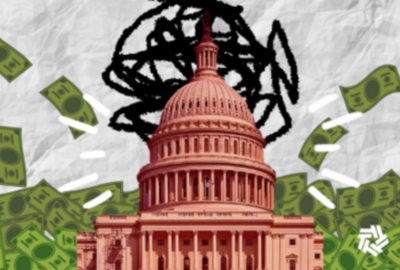HHS fraud teams turn page in big data movement
A diverse team within the Health and Human Services Department's Office of Inspector General is using data — and predictive analytics — to identify more than...
When it comes to big data, some agencies are beginning to have their “a-ha” moment.
Agencies like the Health and Human Services Department and its Office of Inspector General are finding new uses for data and predictive analytics to weed out waste, fraud and abuse. This past summer, the department’s Medicare Fraud Strike Force finished the largest action ever against health care fraud.
Since President Barack Obama announced his Open Data Policy in 2013, organizations are beginning to gather and make that information available to the public. But even in a complicated budgetary climate, it’s what agencies do with that data, that makes an impact, said Caryl Brzymialkiewicz, assistant inspector general and chief data officer at HHS.
“For a lot of analytic teams, especially after sequestration the past few years, we’ve all been under budget constraints,” Brzymialkiewicz said, at the Oct. 14 Predictive Analytics World conference in Washington. “We don’t have the size of teams that we want. So really the question becomes, given all of that, how can we? There’s still a lot of really great ideas.”
Brzymialkiewicz has been in her job as HHS chief data officer for six months. She said it’s her job to cultivate a collaborative team that looks at the data it has and collectively ask, “So what?”
In June, the department brought charges against 243 people, which HHS said billed for equipment that wasn’t delivered and care that wasn’t needed or given — a total of $712 million worth of false billings.
Success came, in part, because the Medicare Fraud Strike Force looked for geographical locations around the country where their billing data showed the potential for fraud. The team studied the patterns and looked for outliers, which Brzymialkiewicz said, can often point to bigger results.
The strike force also specifically studied and developed risk models for medical providers and pharmacies, and it used five categories to determine which ones might bill for questionably high amounts of prescription drugs. Based on that work, 44 people were charged for Medicare Part D fraud, Brzymialkiewicz said.
The agency identified “questionable” billing worth $2.3 billion at 1,400 pharmacies. Spending for Medicare Part D rose more than 136 percent between 2006 and 2014, topping $121 billion last year.
But “solving” fraud has no definitive end. When one problem gets solved, fraud has to go somewhere else, Brzymialkiewicz said.
“We’re trying to develop new approaches to identify unknown, undetected and emerging patterns,” she said. “So that whack-a-mole pattern, how do we get ahead of that? How do we counter new and existing fraud, waste and abuse?”
Getting everyone involved
Brzymialkiewicz said creating the right data analytics team needs a combination of subject matter experts and data scientists.
The team she assembled ranges from auditors and attorneys to law enforcement officers and data scientists. She said it’s the focus on the mission that made recent fraud detection efforts so collaborative.
Leveraging the talent of young federal employees — and student interns in the Pathways Program — are other keys to Brzymialkiewicz’s data teams.
“I’m trying to create an analytic community practice umbrella around all of them,” she said. “Now that we have a lot of people in the federal government who are going to be retiring, some of the people that are coming in, the millennials, they want to play with data. They know data. They’re data natives. They get it.”
Brzymialkiewicz said working with students can entirely change the dynamic of the team. Putting a special focus on the work that student does, and creating a positive environment for the intern, helps the student and the agency, she said.
“What we’re finding is that then helps us with our recruiting for future students, because then they’ve had a positive experience.”
The lessons they learned in bringing on young talent is also helping her office with onboarding, or as Brzymialkiewicz describes it, “smart growth.”
“That’s actually one of my biggest challenges, is to make sure when we bring on new talent, we’re bringing on the right talent,” she said. “We actually go through the crawl, walk, run phase to make sure we’re going to build on our successes.”
Copyright © 2025 Federal News Network. All rights reserved. This website is not intended for users located within the European Economic Area.
Nicole Ogrysko is a reporter for Federal News Network focusing on the federal workforce and federal pay and benefits.
Follow @nogryskoWFED





